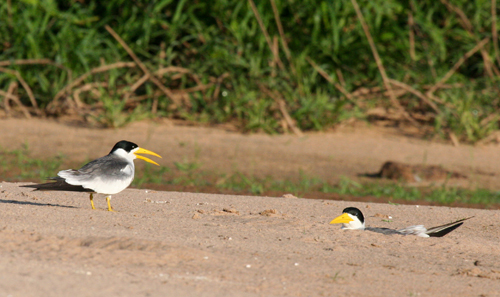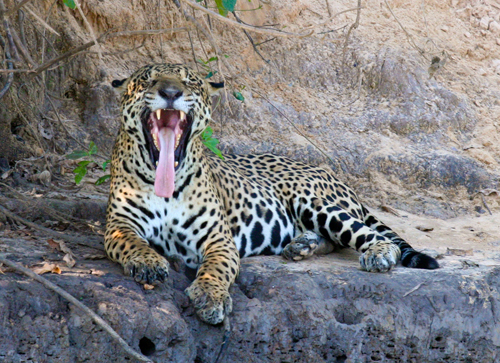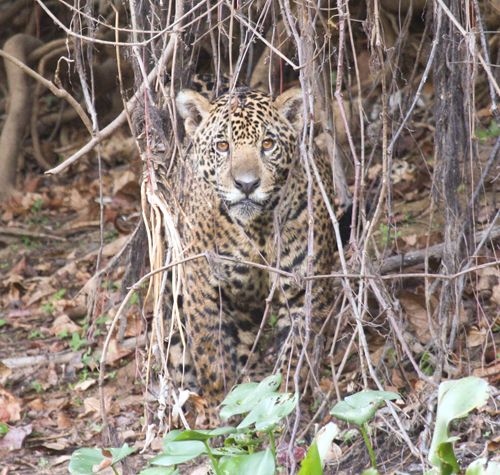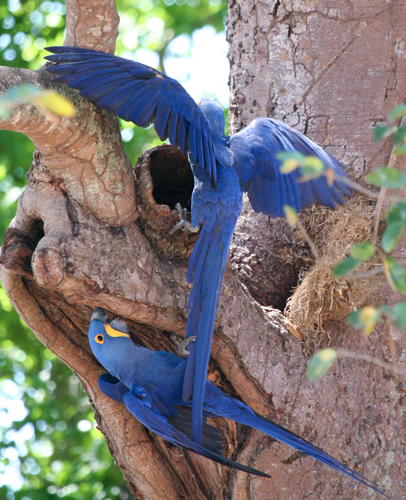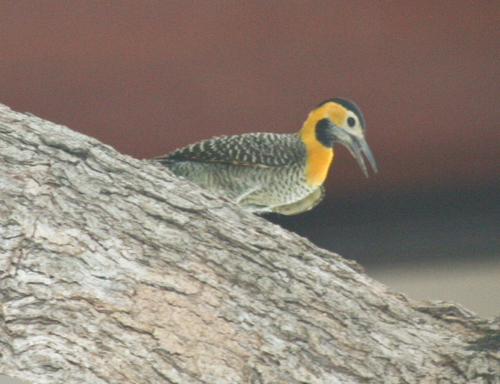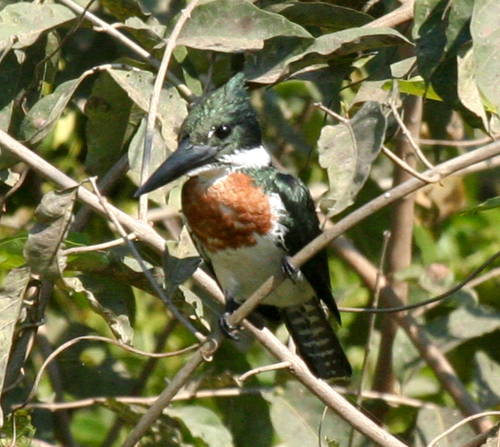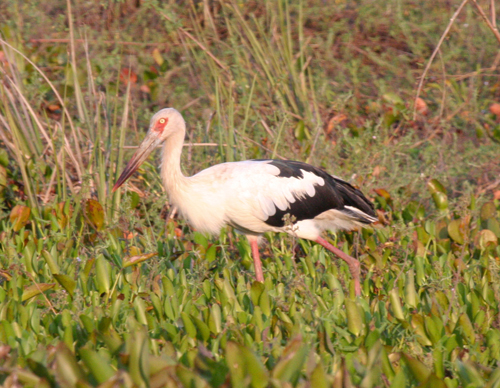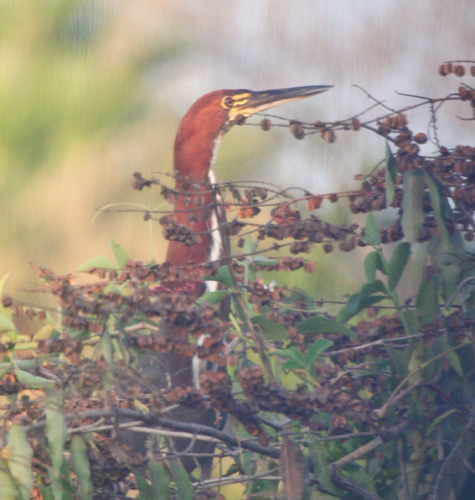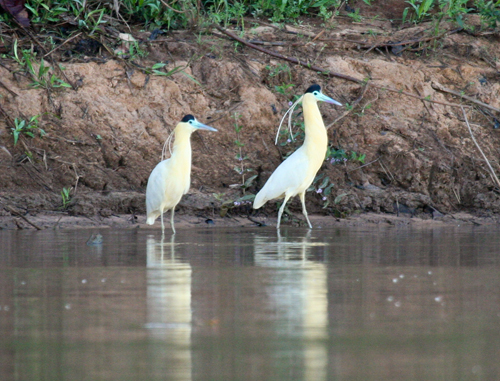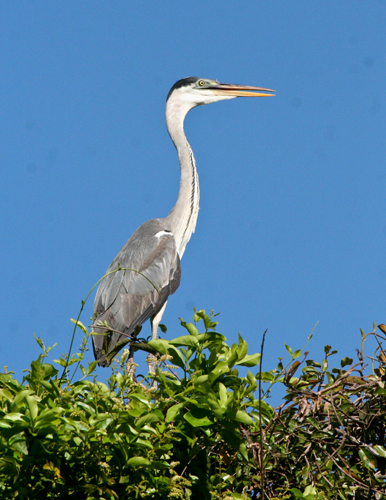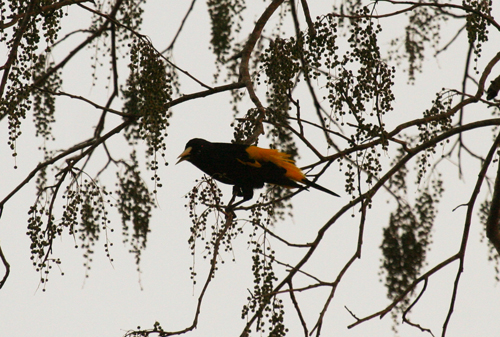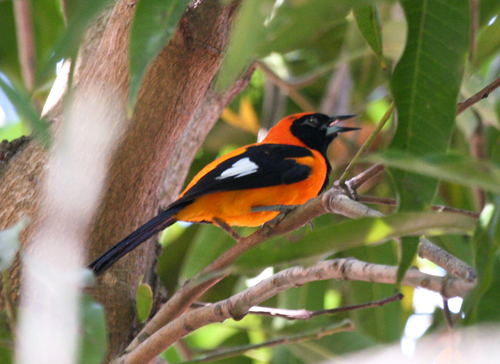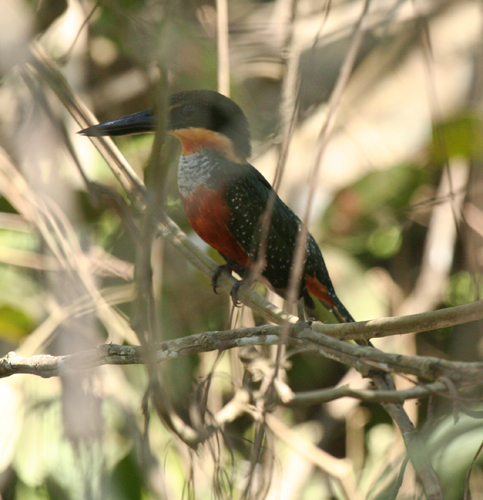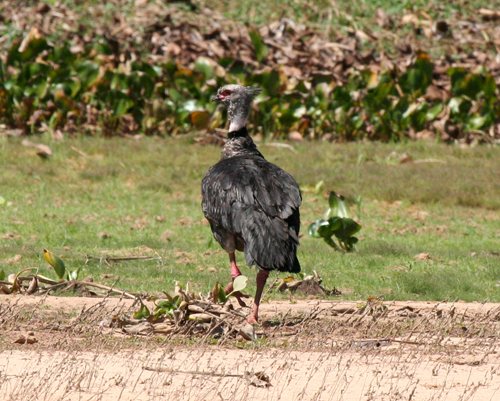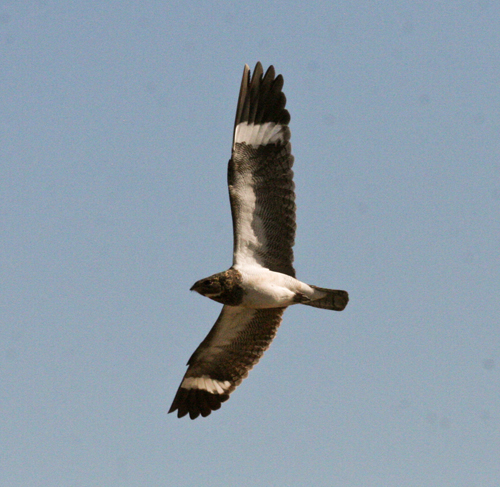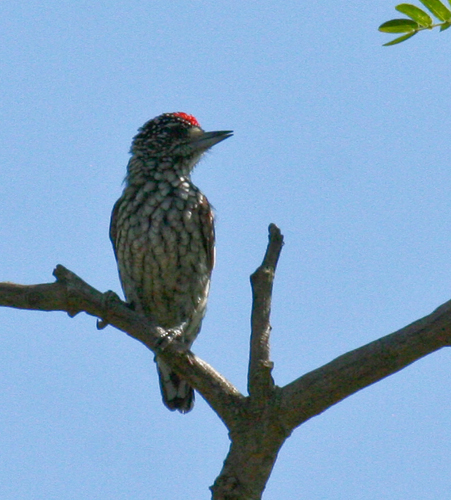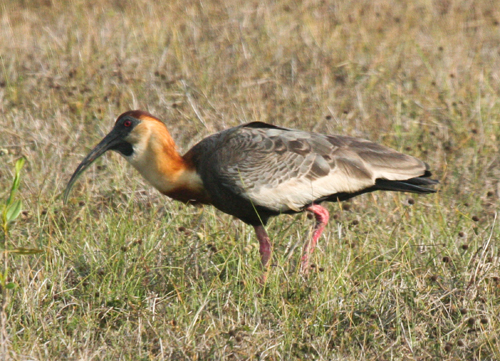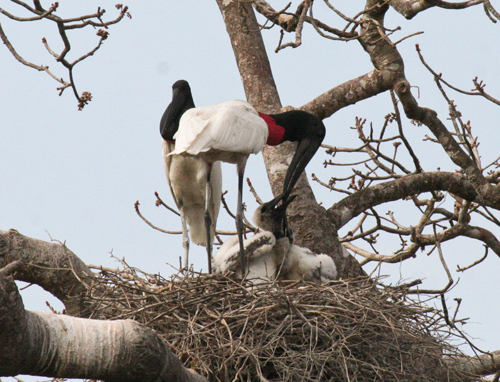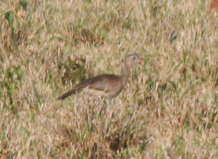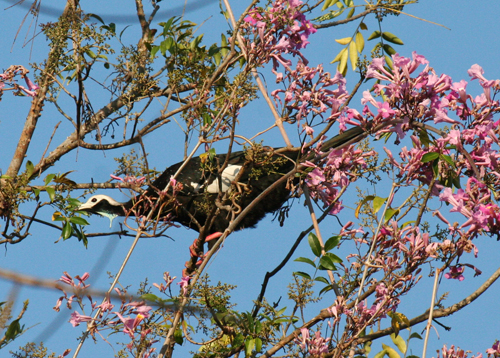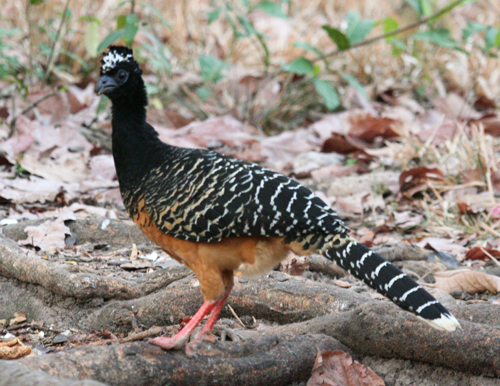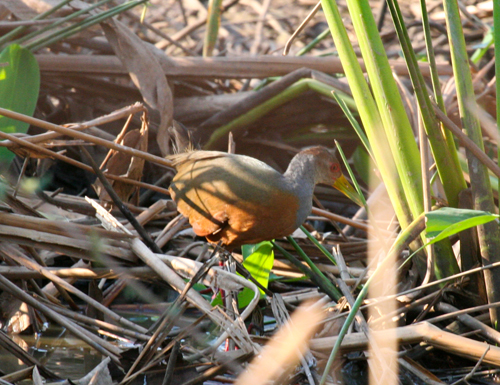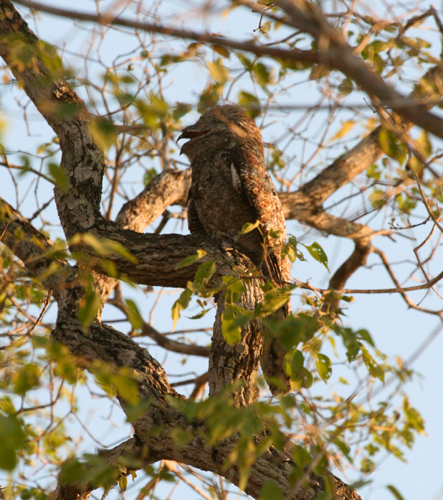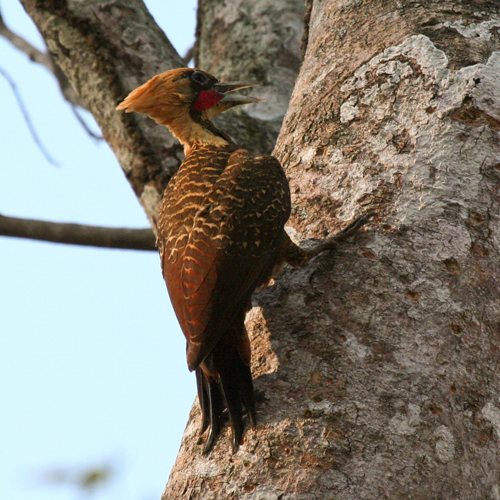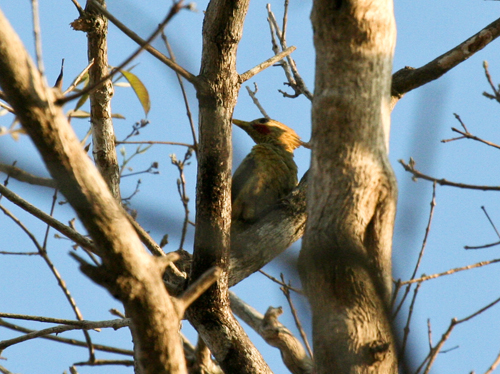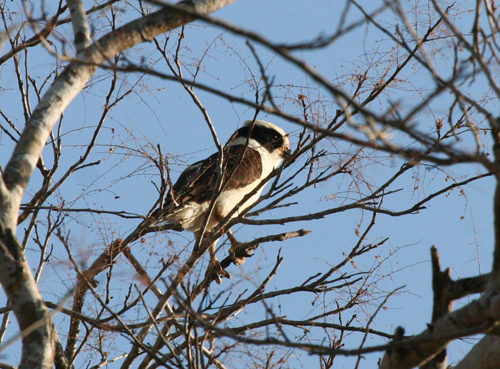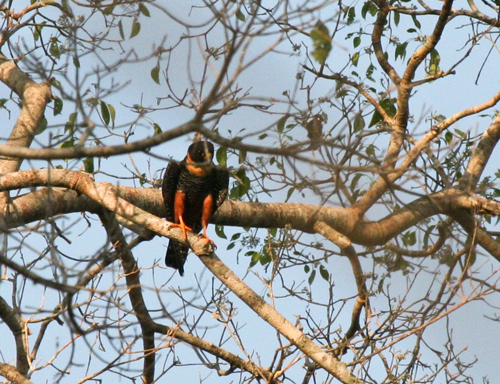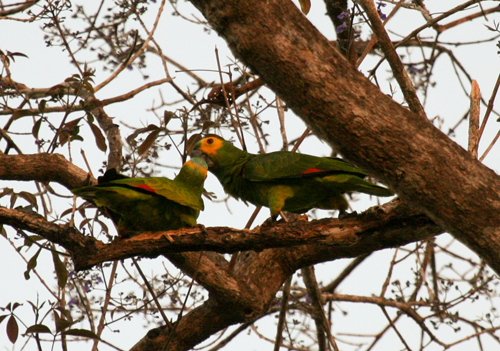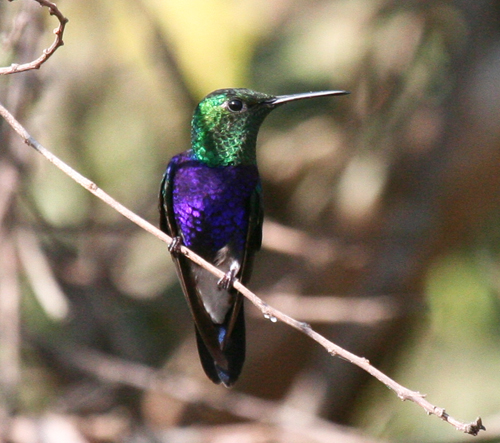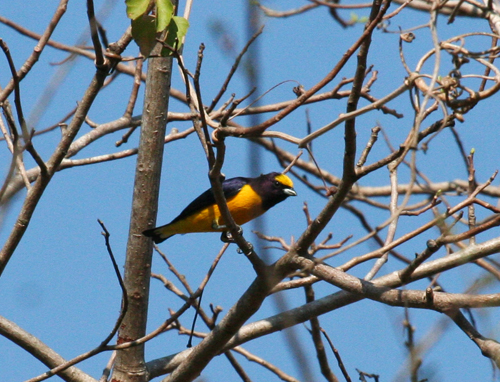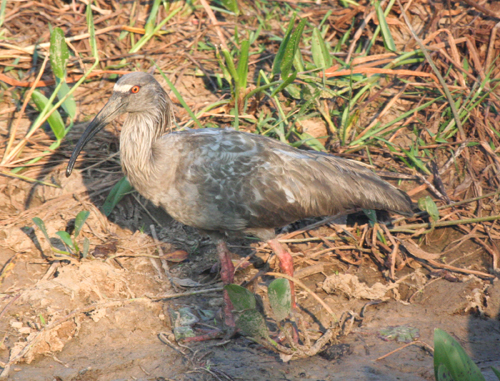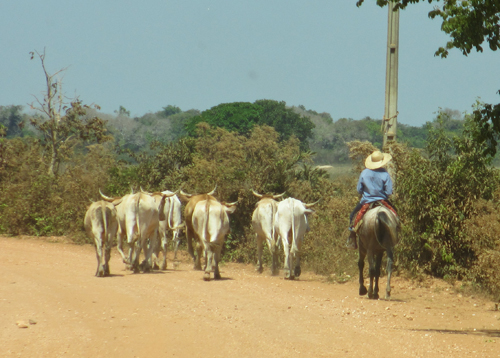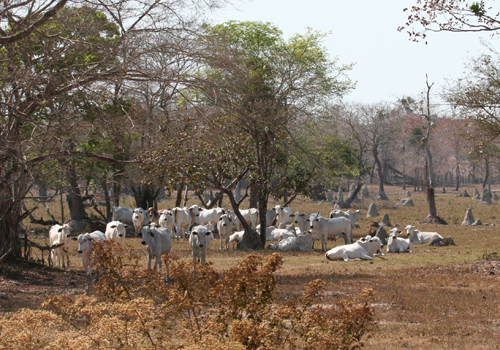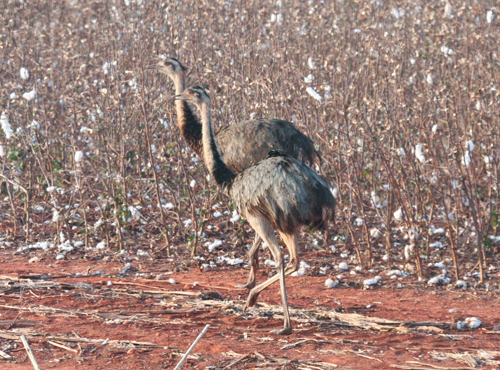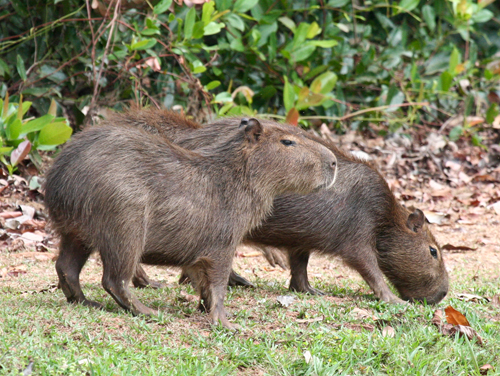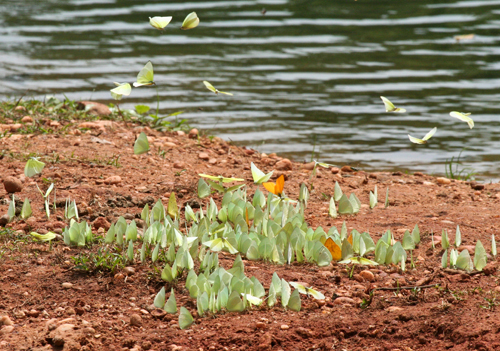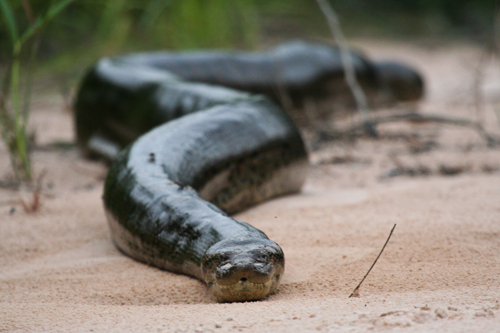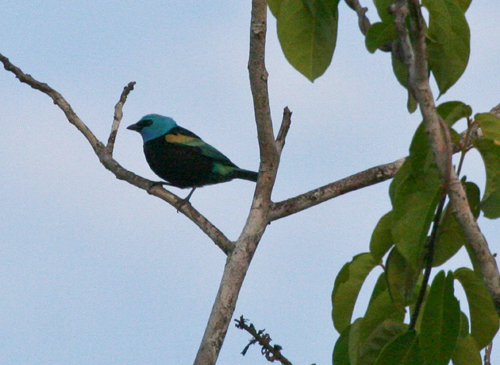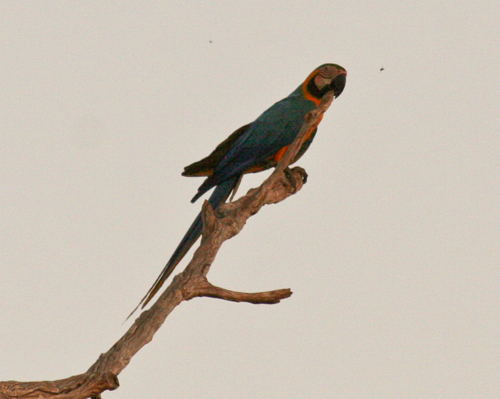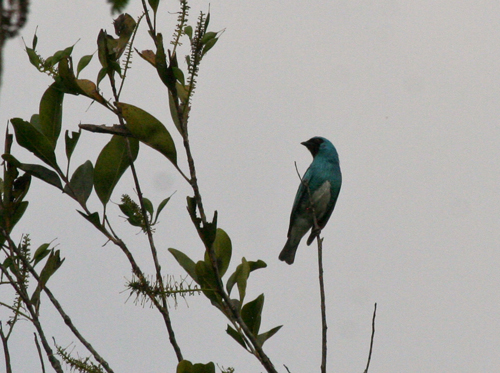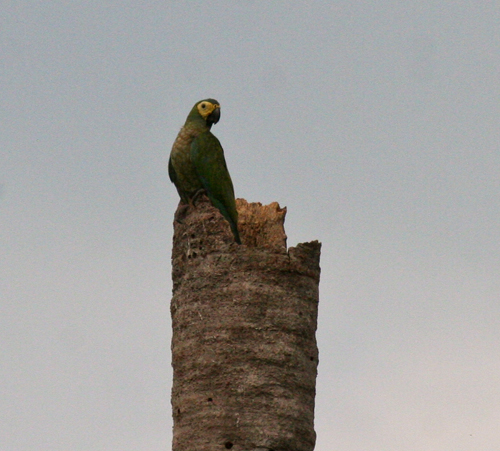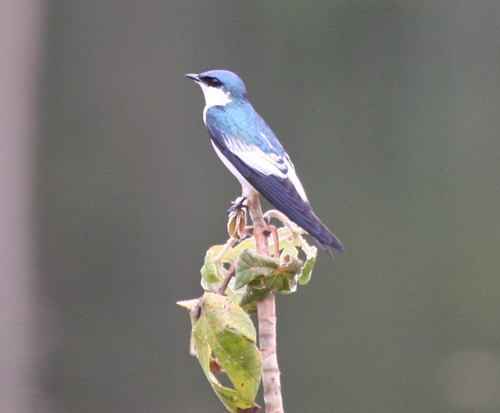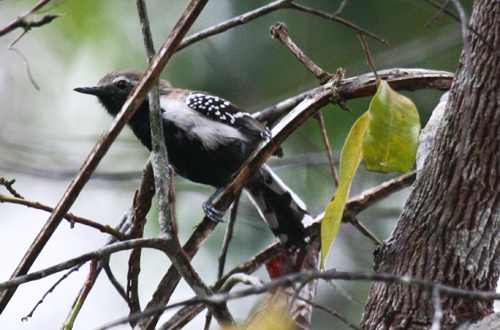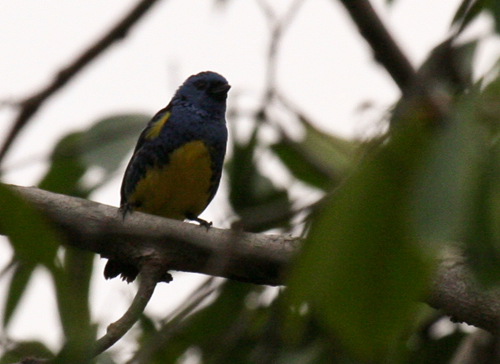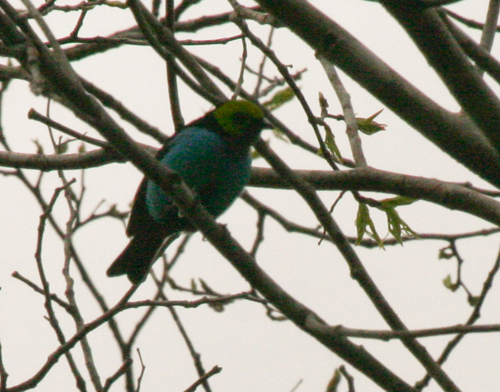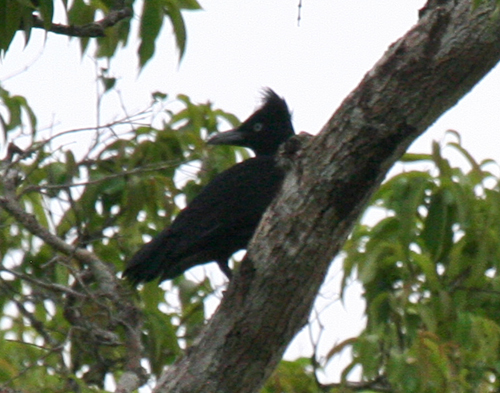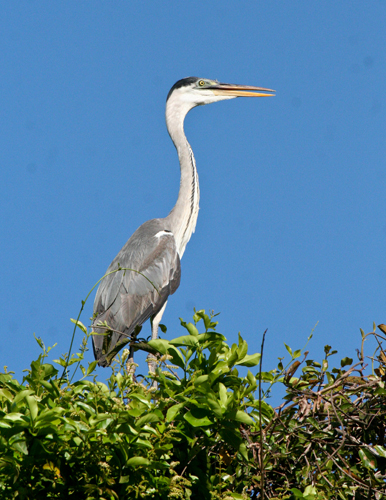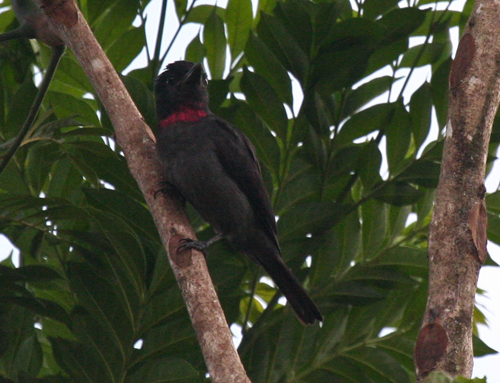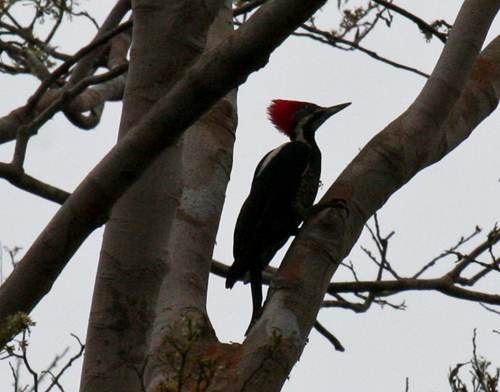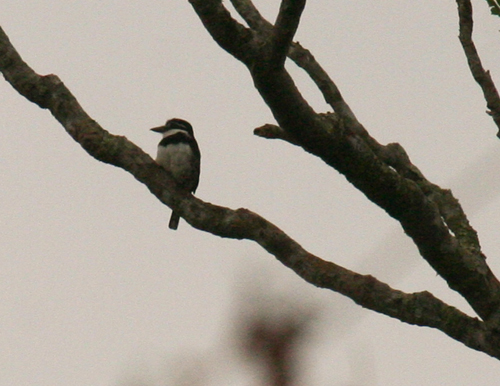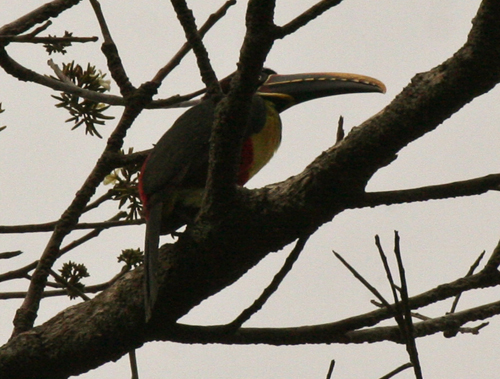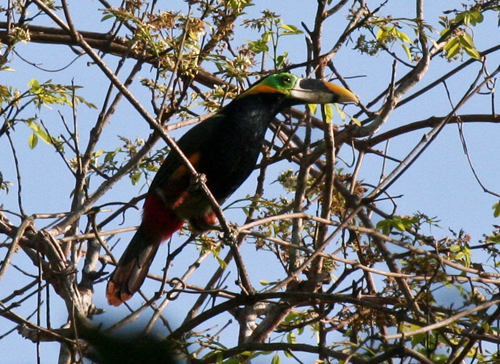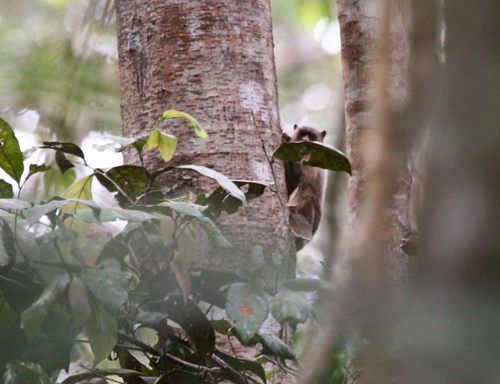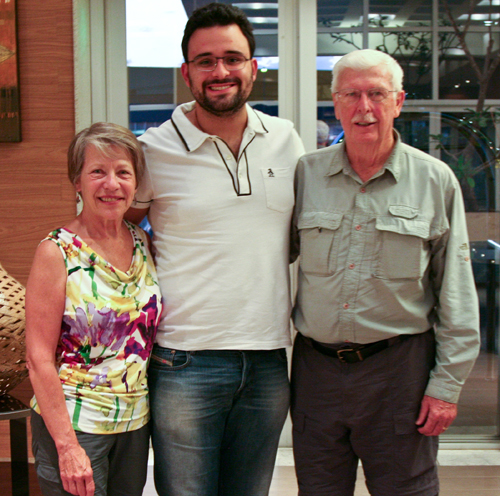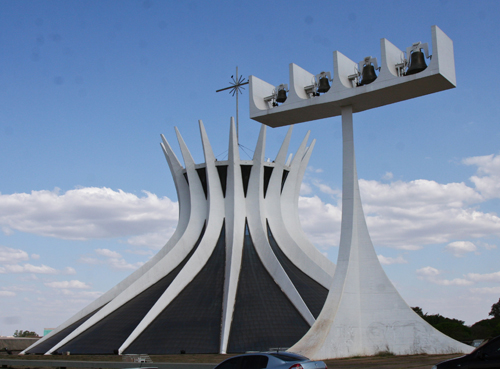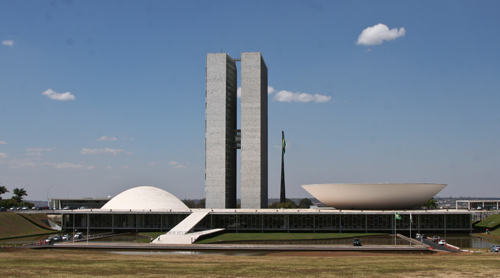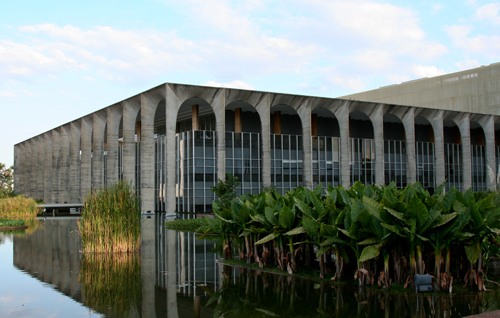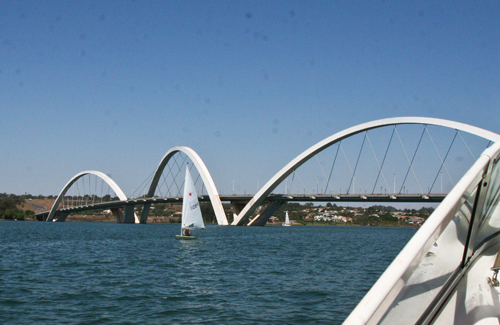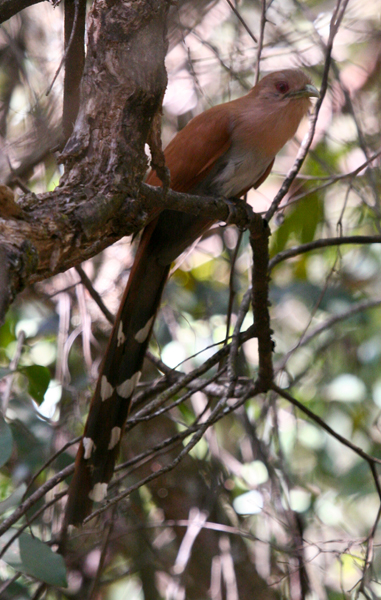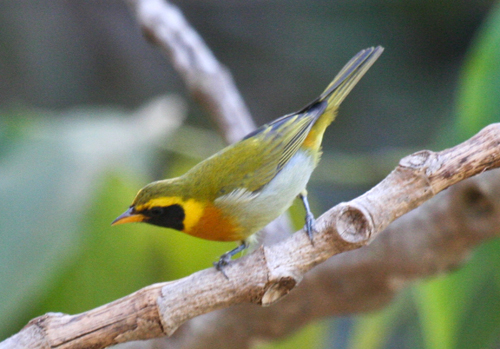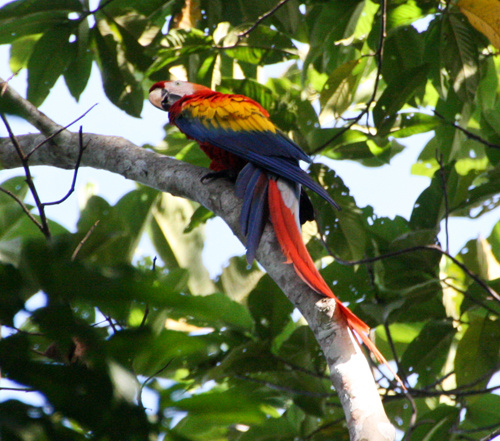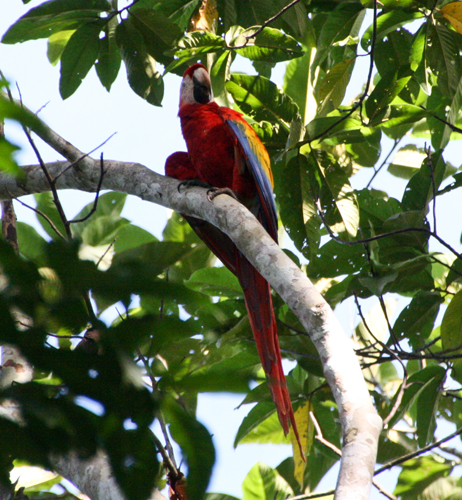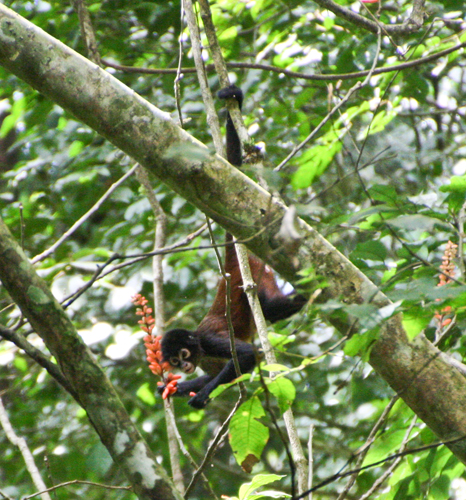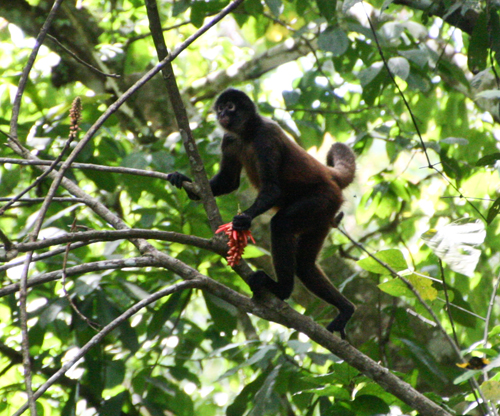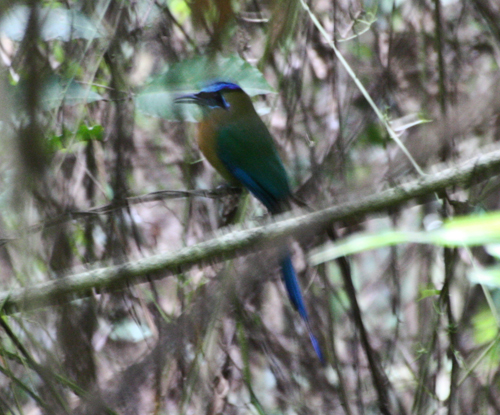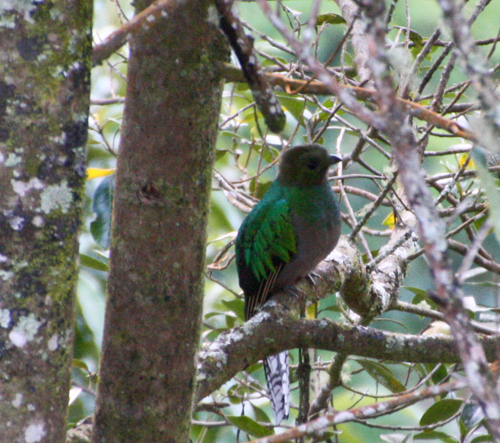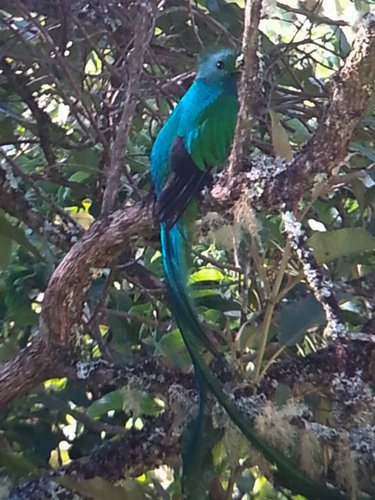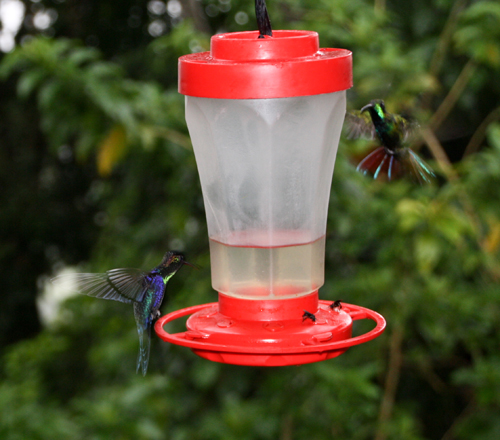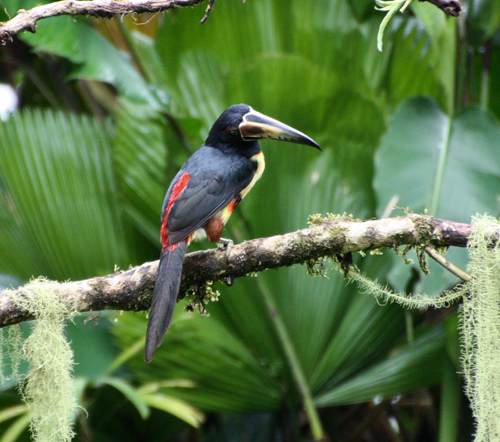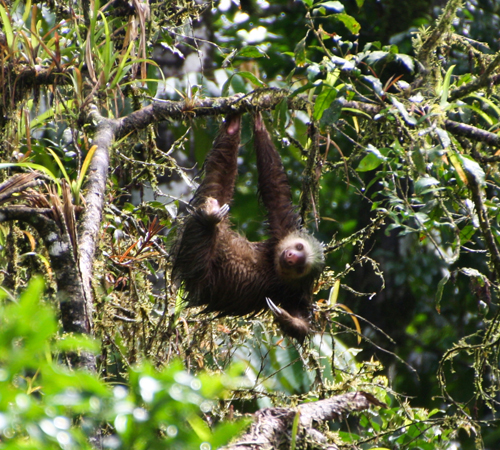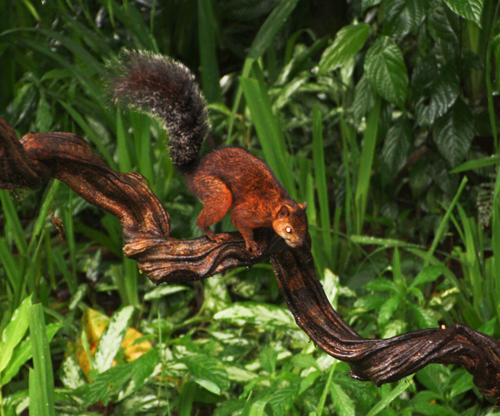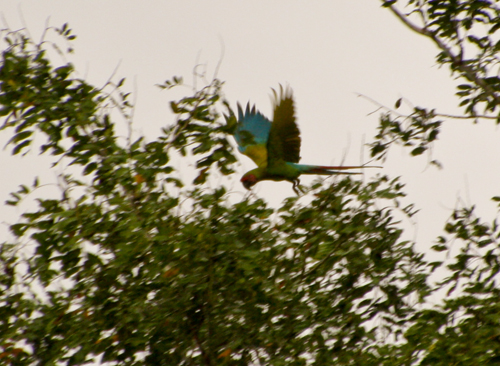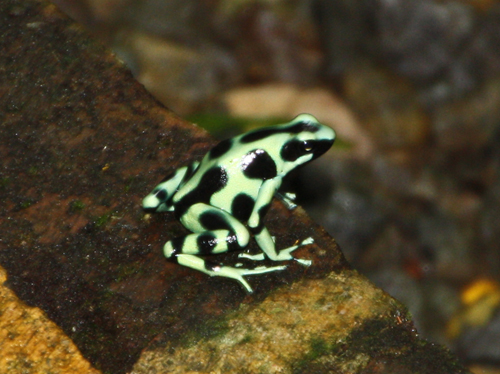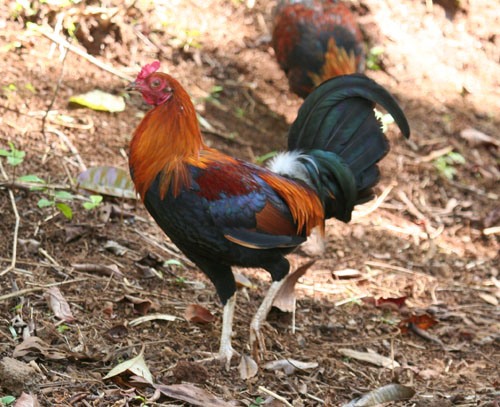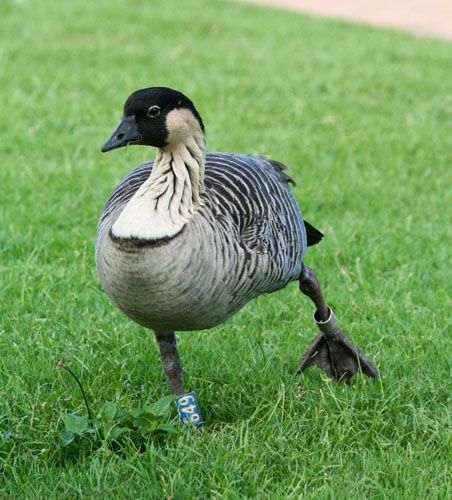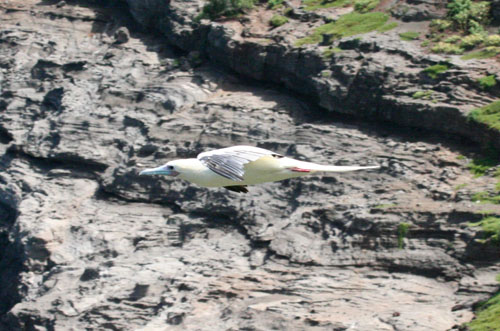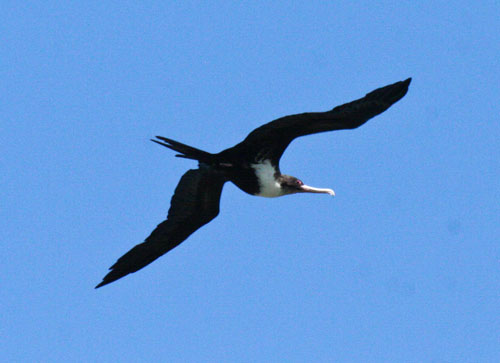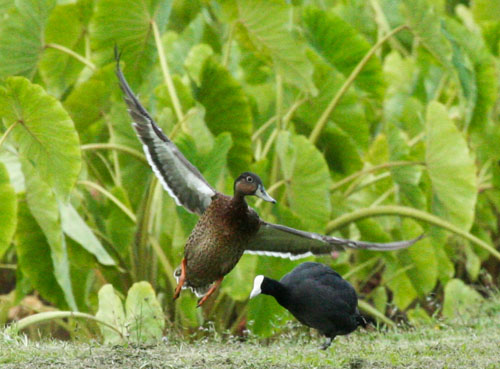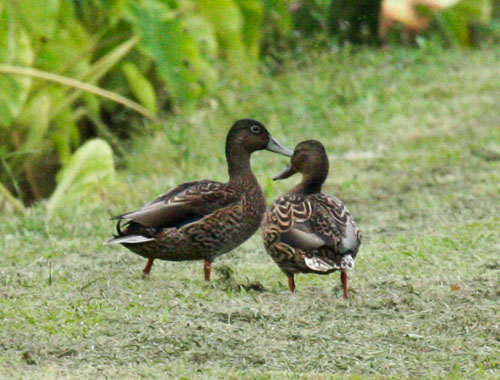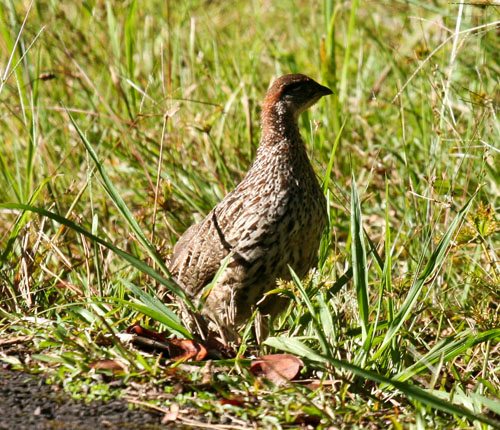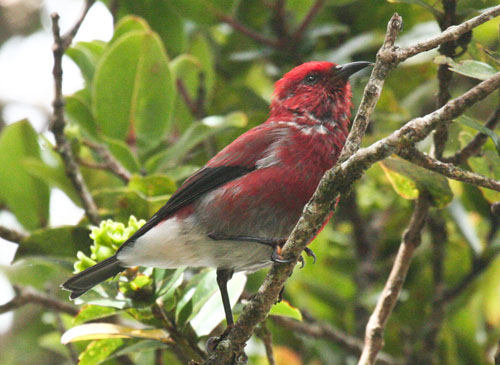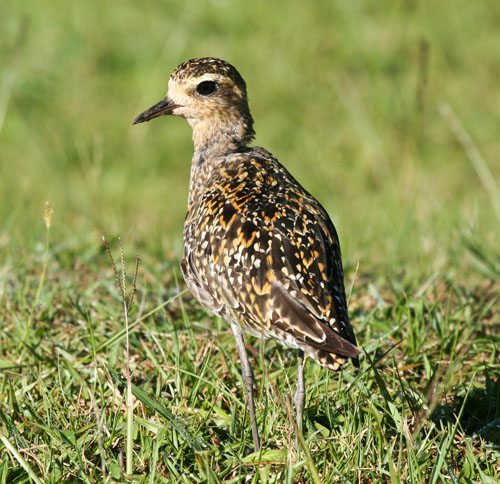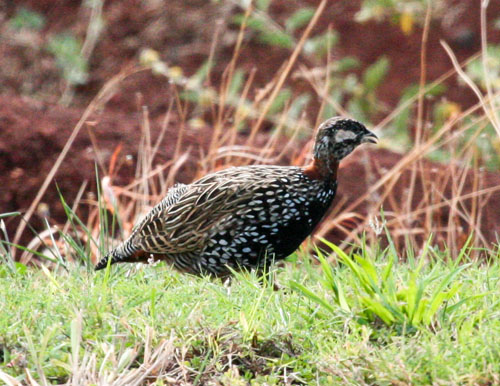On June 19, 1915 I hiked up Ramsey Canyon in the Huachuca Mountains in search of Tufted Flycatchers. During the past month a pair of Tufted Flycatchers has been seen regularly about 2 miles up the canyon from the Nature Conservancy’s Ramsey Canyon Visitor Center. Rarely seen in North America, this pair constitutes the first recorded North American nesters.
The first mile of the hike, approximately, is on the Nature Conservancy Preserve. The trail there is well marked and has benches at regular short intervals for the benefit of those of us not accustomed to hiking above 5,000 feet, as this is. Where the Nature Conservancy Preserve ends, the Coronado National Forest begins. Ramsey Peak stands at 8,725 feet at the upper end of the Canyon.
Following the detailed description provided by volunteers at the Nature Conservancy, one of whom was the first to locate these Tufted Flycatchers, I located them about 2.5 hours after I started on the hike. I was very surprised that there was no one else on the trail. At the specified location one, and possibly both, of the Flycatchers gave me great looks as they sallied out from the bare twigs at the end of a couple of Engleman Spruce trees to capture passing insects. I was not able to locate the nest which apparently can be seen fairly easily with binoculars. I was thrilled to add this colorful little flycatcher as number 739 on my North American Life List. Due to hip replacement surgery in early March, I have not been travelling to find new birds, so this, only my second new life bird in 2015, was very rewarding. Particularly rewarding was discovering that my recovery has been so very good that I was able to negotiate the high altitude and 2 miles of high trail with no difficulty.
The day was beautiful and the silence supreme, so I decided to have my lunch while sitting on a rock watching the Flycatcher(s). About 12:30 I began the return trip. Over-confidence in the mountains, however, can be a big mistake. As I walked slowly along the trail, I was careless in failing to observe the sign at the place where the trail split. I thought I had merely continued on the same trail that I had come up, but after a while I began to wonder why nothing looked familiar. At first I thought I just had not noticed things as I labored upward earlier, so, instead of turning back, I foolishly continued on the trail. About 2:00 p.m., I realized that I was on a different trail. Not to worry, just follow the trail downward and I would come out at the base. About 2:30 I decided that strategy was too risky, as sometimes the trail ascended on switchbacks, and sometimes it went down, and I did not know how far I would have to walk to get out. Still, no one else showed up on the trail, but there began to be bear sign.
At about that time the trail passed into the open on a rocky point, from which I could see Sierra Vista in the east. I guessed it to be about 5 or 6 miles down the canyon from where I was. I had lost confidence in my ability to get out safely on my own, so I took the opportunity of open space and hoped for reception, to call 911 on my cell phone. The 911 representative, after finding out where I was (“in the mountains”), informed me that 911 did not respond to problems in the mountains, but that the Cochise County Sheriff’s office had a Search and Rescue Team that she would contact for me. She did, and they quickly got on the line, asked some questions about my physical condition (which was still good, mostly because I had carried a good supply of water with me) and informed me that they would send out a team to get me. I relaxed, feeling that my problem was now under control, and stretched out on the trail with my backpack for a pillow and dozed for a while. My phone rang, and the Searcher asked me to tell him if I could hear their series of 3 whistles. I could not hear them. He told me they would try again in a bit. I then tried to get up and could not, because of severe cramps in both of my legs. Postassium deficiency, from the heat and exertion of the day. After working that out, I was able to get up. A little while later I heard their whistle and called out that I could hear them. Five searchers arrived a few minutes later. A welcome sight indeed!
They did some checking on my vitals and had me drink some Gatorade (hot Gatorade, due to the time on the trail getting up to me) to restore my potassium level and ability to avoid cramps. When they were satisfied that I was mentally and physically capable, they asked if I felt that I could walk out with them. I asked how far, and they said .4 of a mile, and I said yes. It turned out to be .7 of a mile, but I made it down to their Polaris ATV. I got in the Polaris and then experienced the absolute worst road trip of my life, on the rutted and steep road down to “civilization”. It was about 3 miles. I clearly could not have walked out. I marvel at the durability of the vehicle, and the skill of the driver, to traverse that “road”.
The Cochise County Search and Rescue Team consists of about 85 people, all local volunteers. They are very impressive and professional. When we all arrived at the base, we were greeted by about at least a half dozen more volunteers. One of them, Ursula, had a camera and took our picture together. The man third in from the right is Manny, who had the idea of organizing the volunteer group about 40 years ago. I wonder how many people they have saved over those years.

Surprisingly, I felt pretty good the next morning so I hiked back up the short mile to the Bledsoe Loop on the Preserve, in further search of the Flame Colored Tanagers that had previously been seen there for several weeks. However, they had abandoned the nest that they had built and were either gone, or in hiding whenever I was in that area. So, I have yet to get to 740 on my North American Life List. I was pleased to meet the Nature Conservancy Preserve Manager, Eric Andersen, who was overseeing some work on the trail near the Bledsoe Loop. He kindly provided me with a can of cold sweet tea to wash down my second picnic lunch of the trip. I found my way back.
